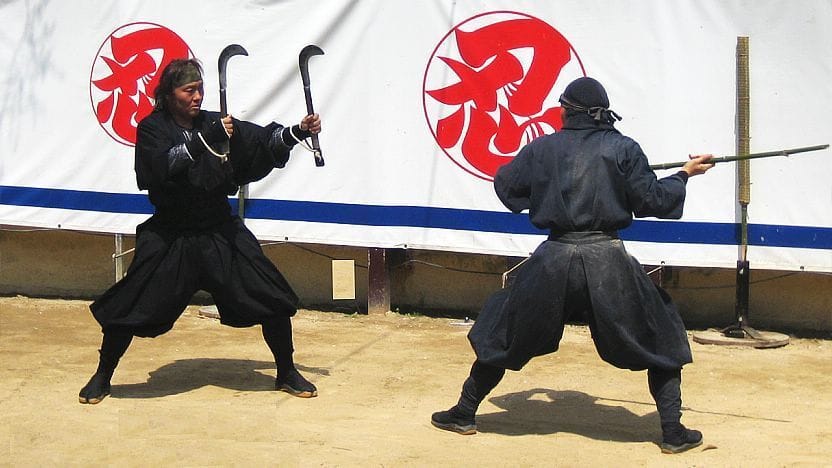Delving into the World of Japan’s Shadow Warriors
Ninjas, the enigmatic warriors of feudal Japan, have captivated imaginations for centuries. Often depicted as masters of stealth and espionage, ninjas played a crucial, albeit shrouded, role in shaping Japan’s history. But when did these figures emerge from the shadows, and what ultimately led to their decline? Let’s embark on a journey through time to uncover the truth behind these legendary figures.
The Rise of the Ninja: A Time of Turmoil
The emergence of ninjas is largely attributed to the Sengoku period (1467-1615), a time of intense civil war and political instability in Japan. Amidst this chaos, feudal lords, known as daimyo, sought any advantage to outmaneuver their rivals. Enter the ninja – masters of unconventional warfare perfectly suited to the era’s climate of intrigue and subterfuge.
While the precise origins of ninjutsu, the ninja art of war, remain shrouded in mystery, historical evidence suggests its development between the 12th and 16th centuries. Influenced by both native Japanese tactics and Chinese military strategies, ninjutsu emphasized practicality, adaptability, and deception – a stark contrast to the samurai’s rigid code of honor.
Unmasking the Ninja: More Than Meets the Eye
Popular culture often portrays ninjas clad in black, scaling walls with superhuman agility. While visually compelling, this image only scratches the surface of their multifaceted roles. In reality, ninjas were masters of disguise, blending seamlessly into everyday life to gather intelligence, disrupt enemy operations, and, when necessary, eliminate threats. Their true power lay not in brute force but in their ability to exploit information, sow discord, and vanish without a trace.
Samurai and Ninja: A Complex Relationship
It’s a common misconception that samurai and ninjas were sworn enemies locked in perpetual conflict. The reality is much more nuanced. While their methods differed dramatically, their fates were deeply intertwined. Samurai, bound by the strict code of bushido, which emphasized honor and open combat, often found themselves reliant on ninjas for tasks deemed dishonorable – espionage, sabotage, and assassination.
This dynamic created a complex relationship of interdependence and distrust. Samurai lords both relied on and feared the ninja’s skills, recognizing their necessity while maintaining a wary distance from their unorthodox methods.
Iga and Koga: The Heart of Ninja Activity
While ninjas operated throughout Japan, two provinces became synonymous with their legendary skills: Iga (present-day Mie Prefecture) and Koga (present-day Shiga Prefecture). These regions, characterized by rugged, mountainous terrain and proximity to Kyoto, the political center of Japan, provided ideal conditions for ninja training and operations.
- Ideal Geography: The remote villages and dense forests of Iga and Koga offered natural cover for covert training and clandestine movements.
- Strategic Location: Their proximity to Kyoto placed ninjas at the heart of political intrigue, making them valuable assets for information gathering and influencing events from the shadows.
It’s important to note that Iga and Koga were not the only places where ninjas operated. Historical evidence suggests a much broader network, with ninjas active in various regions depending on the demands of their patrons and the shifting tides of power.
The Legacy of the Ninja: Enduring Fascination
The Meiji Restoration of 1868 marked a turning point in Japanese history. The abolishment of the feudal system and the modernization of Japan’s military rendered the traditional roles of both samurai and ninja obsolete. Yet, while their era has passed, the legend of the ninja endures.
From movies and video games to modern espionage tactics, the legacy of the ninja continues to captivate and inspire. Their ability to adapt, exploit information, and operate with stealth and precision holds a timeless allure, reminding us that true power often lies not in what is seen, but in what remains hidden in the shadows.
Beyond History: The Rise of “Ninja Warrior”
While the historical ninjas faded into the annals of time, their spirit found new life in the modern age with the advent of the television show “Ninja Warrior.” Debuting in Japan in 1997 as “Sasuke,” the show drew inspiration from the legendary skills and agility attributed to ninjas, challenging athletes to conquer grueling obstacle courses that tested their physical and mental limits.
The show’s popularity quickly transcended borders, captivating audiences worldwide and solidifying the ninja’s place in modern popular culture. While “Ninja Warrior” may not accurately reflect the realities of feudal Japan’s shadow warriors, it serves as a testament to their enduring legacy, inspiring viewers with feats of strength, agility, and determination.









